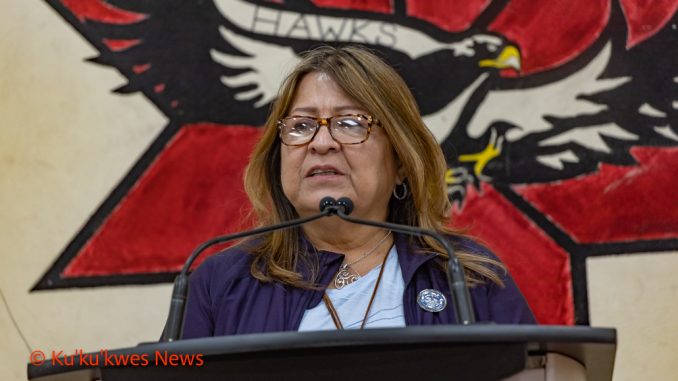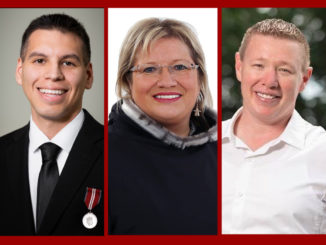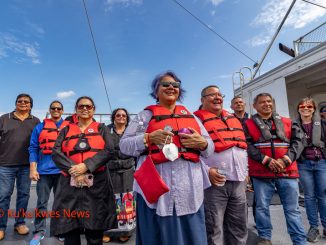
The federal government is providing $326,700 to go towards a project to search for unmarked graves of Indigenous children who died while attending the former Shubenacadie Indian Residential School in Nova Scotia.
The funding, which will be administered by the Sipekne’katik First Nation, will assist in the ongoing fieldwork at the site, additional research and interviews with residential school survivors throughout the Maritime provinces.
“I want people to know that the residential school stuff was not a hundred years ago,” Sipekne’katik Chief Mike Sack said at a news conference held in Indian Brook First Nation on April 20.
“We’re still dealing with the effects of (the residential school system) daily in our community,” he said in his opening remarks.
Chief Sack said the funding to search the former school’s grounds is “just the tip of the iceberg” of what is needed for survivors and their families to heal.

Marc Miller, the federal minister of Crown-Indigenous Relations joined Sipekne’katik Chief Mike Sack and Dorene Bernard, a Mi’kmaw elder and residential school survivor in announcing the funding. Jaime Battiste, MP for Sydney-Victoria and parliamentary secretary to the Minister of Crown-Indigenous Relations, and Kody Bloise, MP for Kings-Hants also attended the news conference.
“Today’s announcement, as Chief Sack said quite clearly, is just the tip of the iceberg,” Minister Miller said.
“As we walk that journey of accompanying survivors and figuring out what the next step is in getting more information as to what exactly occurred at this institution,” he said.

The Shubenacadie Indian Residential School, which was run by the Roman Catholic Church, was the only school of its kind in Atlantic Canada. Located in the village of Shubenacadie, N.S., it operated from 1929 to 1967. More than 1,000 Mi’kmaw and Wolastoqkew children from Nova Scotia, Prince Edward Island, New Brunswick, and Quebec attended the school.
“It’s important that their voices are heard” – Dorene Bernard
According to Bernard, a portion of the funding will go towards interviewing residential school survivors and their families throughout the Maritimes to find out what happened to the children who either went missing or died while attending the school
“It’s reaching out to survivors because there’s so (much) oral history passed down through generations,” Bernard explained.
“It’s important that their voices are heard,” she said.
Bernard said the information collected from survivors and their families will be incorporated with the information survivors provided to the Truth and Reconciliation Commission.

The money for the project is being provided by the Residential School Children’s – Community Support Funding Program. The federal government has allocated more than $200-million over five years to support Indigenous communities in locating unmarked graves at other former residential school sites across the country.
Minister Miller said the federal government is currently funding 70 similar projects across the country.
In 2021, several First Nation communities in western Canada discovered more than a thousand unmarked graves at the sites of former residential schools. The graves are believed to be those of Indigenous children who died while attending the church-run schools.
In the summer of 2021, the Sipekne’katik First Nation teamed up with Saint Mary’s University to scan the former ground of the Shubenacadie Indian Residential School to search for possible human remains using electromagnetic induction and ground-penetrating radar.
According to Chief Sack, more than 70 per cent of the grounds were scanned at the time. No unmarked graves were detected, he said.




